Prenatal dexamethasone exposure reduces osteoprogenitor proliferation in mice via histone modifications at the Mkp-1 gene locus
- PMID: 39609620
- PMCID: PMC11604782
- DOI: 10.1038/s42003-024-07288-x
Prenatal dexamethasone exposure reduces osteoprogenitor proliferation in mice via histone modifications at the Mkp-1 gene locus
Abstract
Prenatal dexamethasone exposure (PDE) has long-term consequences in bone development, though the underlying mechanisms remain unclear. Our results show that PDE offspring exhibit reduced bone mass, fewer osteoblasts and diminished osteoprogenitors proliferation. Further analyses show that PDE increases MKP-1 expression, while decreasing H3 lysine 9 dimethylation (H3K9me2) and H3 lysine 27 trimethylation (H3K27me3) at the Mkp-1 gene locus. Mechanistically, dexamethasone suppresses osteoprogenitors proliferation by upregulating MKP-1 expression, notably through the inhibition of H3K9me2 and H3K27me3 modifications, which promote demethylation and transcriptional activation of the Mkp-1 gene. Importantly, restoring histone methylation balance with PFI-90 or GSK-J4 treatment blocks the inhibitory effects of PDE on MAPK signaling in osteoprogenitors, and mitigates the detrimental impact of PDE on osteoprogenitor proliferation and bone development in the offspring. This study provides new insights into the epigenetic mechanism by which PDE disrupts long-term programming of fetal osteoprogenitor proliferation, ultimately impairing long bone growth in offspring.
© 2024. The Author(s).
Conflict of interest statement
Competing interests: The authors declare no competing interests. Ethics approval: All animal experiments were ethically approved by the Animal Ethics Committee of Southern Medical University Nanfang Hospital.
Figures
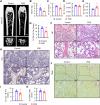

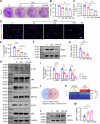
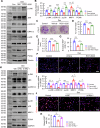
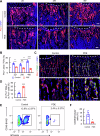
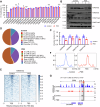

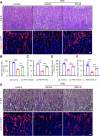
Similar articles
-
Increased H3K27ac level of ACE mediates the intergenerational effect of low peak bone mass induced by prenatal dexamethasone exposure in male offspring rats.Cell Death Dis. 2018 May 29;9(6):638. doi: 10.1038/s41419-018-0701-z. Cell Death Dis. 2018. PMID: 29844424 Free PMC article.
-
The Role of MKP-1 in the Anti-Proliferative Effects of Glucocorticoids in Primary Rat Pre-Osteoblasts.PLoS One. 2015 Aug 11;10(8):e0135358. doi: 10.1371/journal.pone.0135358. eCollection 2015. PLoS One. 2015. PMID: 26263165 Free PMC article.
-
11β-Hydroxysteroid dehydrogenase 2: A key mediator of high susceptibility to osteoporosis in offspring after prenatal dexamethasone exposure.Pharmacol Res. 2022 Jan;175:105990. doi: 10.1016/j.phrs.2021.105990. Epub 2021 Nov 19. Pharmacol Res. 2022. PMID: 34808367
-
Decreased H3K9ac level of AT2R mediates the developmental origin of glomerulosclerosis induced by prenatal dexamethasone exposure in male offspring rats.Toxicology. 2019 Jan 1;411:32-42. doi: 10.1016/j.tox.2018.10.013. Epub 2018 Oct 22. Toxicology. 2019. PMID: 30359671
-
Mitogen-activated protein kinase phosphatase-1 promotes neovascularization and angiogenic gene expression.Arterioscler Thromb Vasc Biol. 2014 May;34(5):1020-31. doi: 10.1161/ATVBAHA.114.303403. Epub 2014 Feb 27. Arterioscler Thromb Vasc Biol. 2014. PMID: 24578378 Free PMC article.
References
-
- Heppe, D. H. et al. Fetal and childhood growth patterns associated with bone mass in school-age children: the Generation R Study. J. Bone Min. Res.29, 2584–2593 (2014). - PubMed
-
- Haikerwal, A. et al. Bone health in young adult survivors born extremely preterm or extremely low birthweight in the post surfactant era. Bone143, 115648 (2021). - PubMed
MeSH terms
Substances
Grants and funding
LinkOut - more resources
Full Text Sources
Molecular Biology Databases
Miscellaneous

